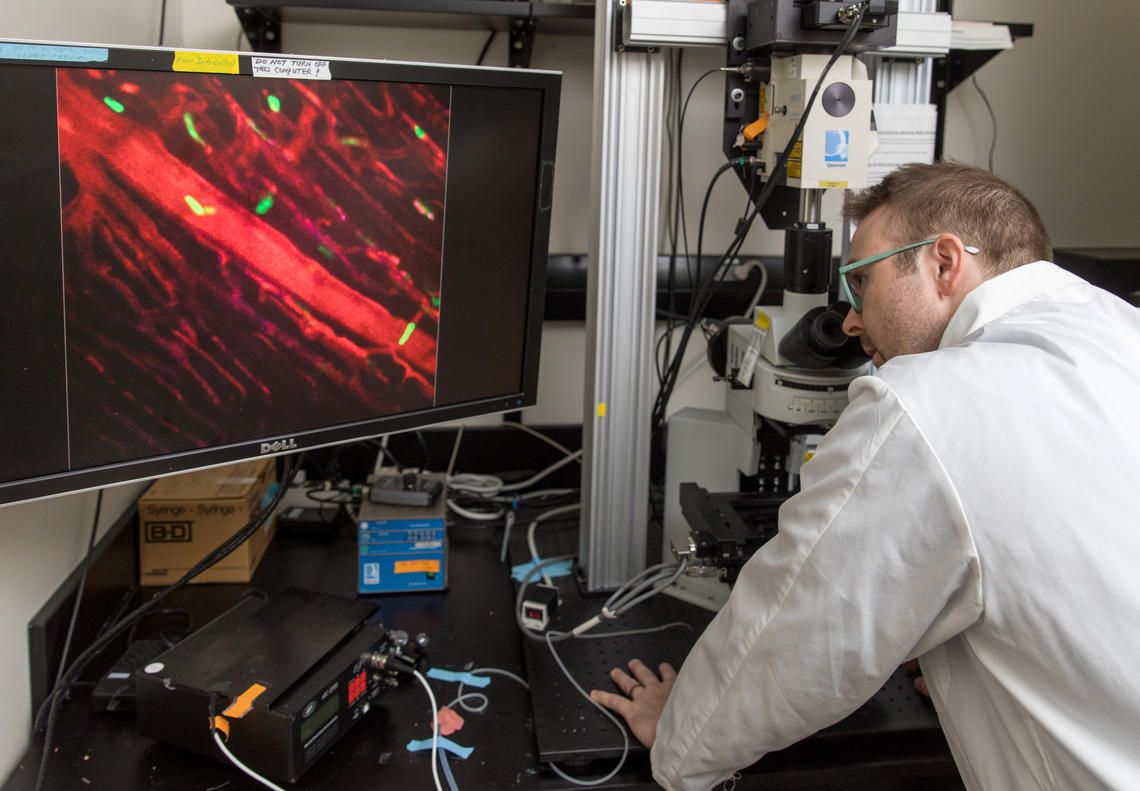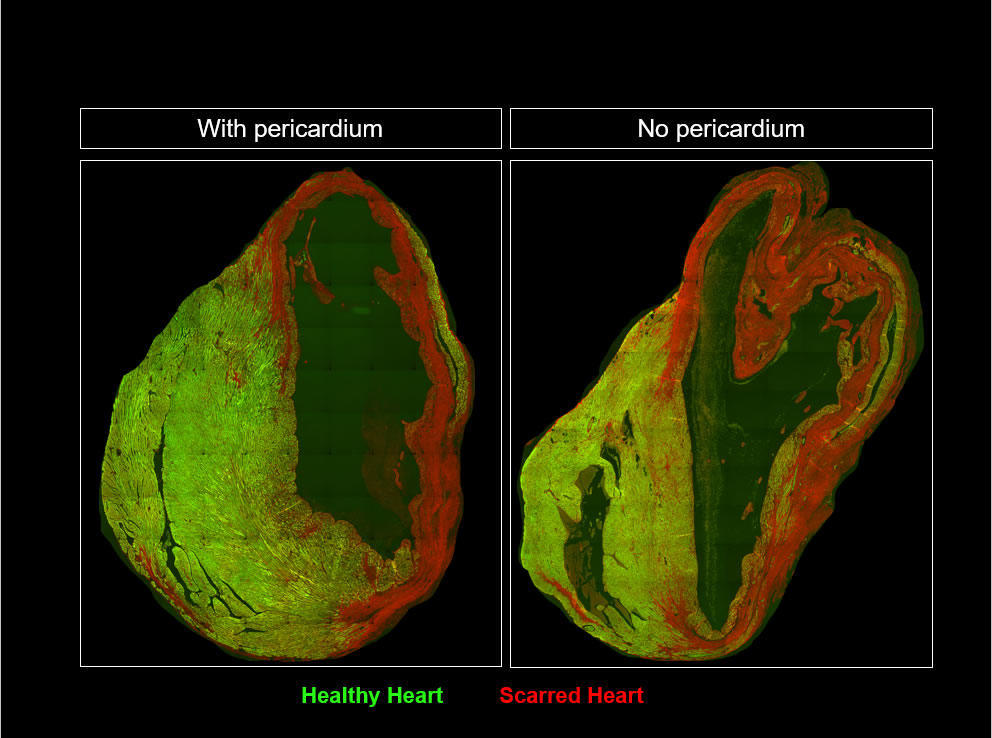July 16, 2019
New cell discovered that can heal hearts

University of Calgary researchers are the first to discover a previously unidentified cell population in the pericardial fluid found inside the sac around the heart. The discovery could lead to new treatments for patients with injured hearts. The study led by Drs. Paul Kubes, PhD, Justin Deniset, PhD, and Paul Fedak, MD, PhD, is published this month in the internationally recognized journal Immunity.
The Kubes lab, in collaboration with the Fedak lab, found that a specific cell, a Gata6+ pericardial cavity macrophage, helps heal an injured heart in mice. The cell was discovered in the pericardial fluid (sac around the heart) of a mouse with heart injury. Working with Fedak, a cardiac surgeon and incoming director of the Libin Cardiovascular Institute of Alberta, the same cells were also found within the human pericardium of people with injured hearts, confirming that the repair cells offer the promise of a new therapy for patients with heart disease.
- Photo above: Clinician-scientist Paul Fedak, left, with immunology researchers Paul Kubes and Justin Deniset. Photo by Adrian Shellard, for the Cumming School of Medicine
“The fuel that powered this study is the funding from the Heart and Stroke Foundation of Canada, the collaboration between two major research institutes at CSM (Snyder and Libin) and the important contribution of philanthropy from the Libin and Snyder families to obtain imaging equipment available to very few programs globally,” says Kubes, the director of the Snyder Institute for Chronic Diseases at the Cumming School of Medicine (CSM) and professor in the Department of Physiology and Pharmacology.
Heart doctors had never before explored the possibility that cells just outside the heart could participate in healing and repair of hearts after injury. Unlike other organs, the heart has a very limited capacity to repair itself, which is why heart disease is the number one cause of death in North America.
“Our discovery of a new cell that can help heal injured heart muscle will open the door to new therapies and hope for the millions of people who suffer from heart disease. We always knew that the heart sits inside a sac filled with a strange fluid. Now we know that this pericardial fluid is rich with healing cells. These cells may hold the secret to repair and regeneration of new heart muscle. The possibilities for further discovery and innovative new therapies are exciting and important,” says Fedak, a professor in the Department of Cardiac Sciences.

Justin Deniset uses live imaging microscopy to watch the cell as it travels through the heart.
Adrian Shellard, for the Cumming School of Medicine
- Photo above: These are photos of the hearts from two mice, one month after a heart event. Anything in green is healthy heart tissue. The red represents scarring on the heart. The photo on the left shows how the heart healed when the pericardial sac and fluid remained intact. In the photo on the right, the fluid and sac were removed. Image courtesy Kubes Lab
Working together and bringing expertise across disciplines, the basic researchers working with the cardiac surgeon, clinician researcher, have identified the cell in less than three years — a relatively quick time frame to move research from the lab and animal models to people.
Justin Deniset, who is the first author on this study, has worked on this research since it began. “This project stemmed from wanting to integrate my previous research training in cardiovascular disease with my current focus on the immune system within the Kubes laboratory. The diverse expertise in both areas combined with the state-of-art infrastructure we have here at the Cumming School of Medicine made it the ideal setting to undertake such an endeavour. Collaborating with a clinician scientist such as Dr. Fedak provided a different perspective to our research questions and enhanced the impact of our work. This type of partnership also paves the way to explore how to translate our findings from the bench to the clinic, which is ultimately our goal,” he says.

These are photos of the hearts from two mice, one month after a heart event.
Next Fedak hopes to recruit a basic scientist to move the research to a broader study of human heart repair. This new program will extend the collaboration between basic and clinical research to find potential new therapeutics to improve heart repair.
Philanthropy fuels advances in research
Both the Kubes and Fedak labs have a solid foundation of support from some of UCalgary’s most generous philanthropic partners, including the Snyder, Libin and Campbell families, whose contributions over the years have allowed the researchers to bring in cutting-edge technology and talented trainees to advance their work and make a global impact in health outcomes.
“The results are spectacular — a fundamental scientific discovery with enormous clinical relevance. It highlights that supporting any part of the CSM enterprise can result in a significant impact in ways you may not expect,” says Fedak. “I am thankful for the support of these families for strengthening my laboratory and allowing me to successfully collaborate with a world-class scientist from the Snyder Institute. We may have invented a new field of research — immuno-cardiology!”
This research is supported by the Heart and Stroke Foundation of Canada, the Canadian Institutes of Health Research, the Canada Research Chairs Program, the National Institutes of Health.




